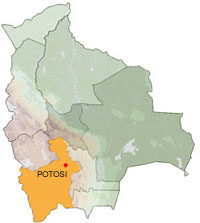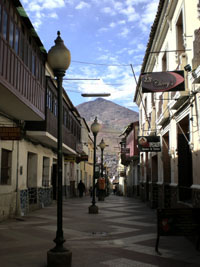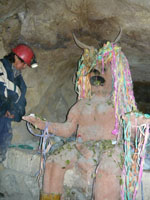 Potosí is the Bolivian department whose capital city, which bears the same name, achieved great prestige and popularity during the colonial period thanks to the veins of silver in its Cerro Rico (rich peak), which at that time were the most significant in the world.
Potosí is the Bolivian department whose capital city, which bears the same name, achieved great prestige and popularity during the colonial period thanks to the veins of silver in its Cerro Rico (rich peak), which at that time were the most significant in the world.
In the 17th century, Potosí was one of the most important cities in the world. It had more inhabitants (160,000) than Seville, London and Paris.
Its residents lived surrounded by extravagant luxuries, compared to the slaves and indigenes who were forced to work in the womb of the earth.
The mining facilities were constructed during this period, and along with them the architectural jewels that decorate its narrow streets - houses, palaces, churches, etc.

|
Did you know it?
In the book Don Quijote de la Mancha, Miguel de Cervantes created the expression "it's worth a Potosí" (vale un Potosí) which meant "it's worth a fortune."
In Spain people say "I love you a Potosí" (te amo un Potosí) to say, "I love you very much".
|
The city of Potosí is at 4067 masl and has 200,000 inhabitants. It was declared a World Heritage site in 1987.

Another tourist attraction in the city is a visit to the mines where there is direct contact with miners, their reality (the conditions under which they work) and El Tío.
El Tío is the god of the mine to whom offerings are made to survive in the womb of the earth. The first Friday of every month the miners meet around the image to praise it and ask its protection.
The Department of Potosí has many tourists visiting thanks to places like the Uyuni Salt Plains, the Sud Lipez Natural Reserve and Uturuncu (6008 masl), etc.


